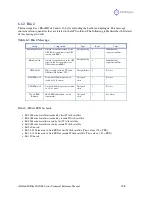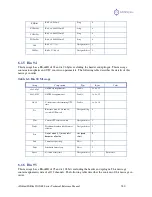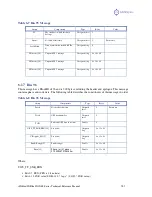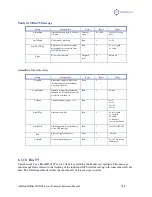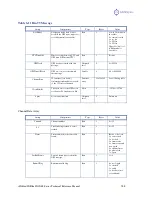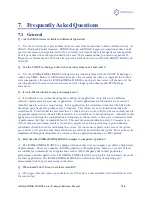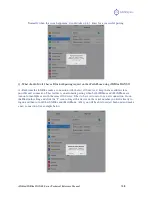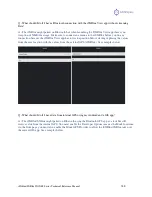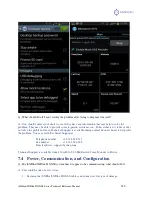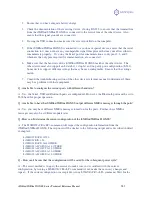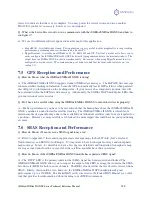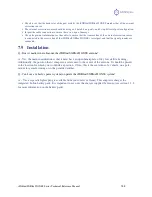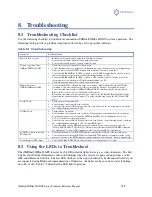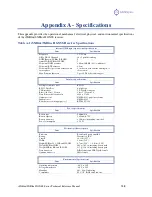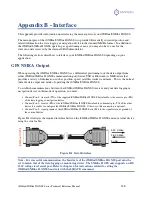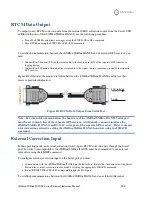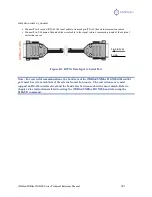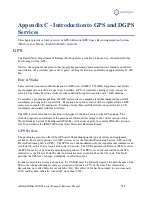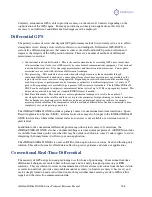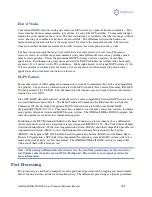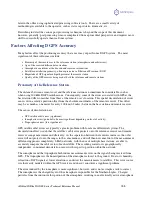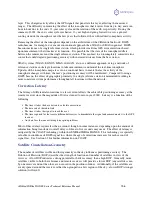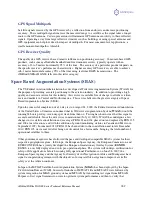
iSXblue/SXBlue II GNSS Series Technical Reference Manual
142
receiver to indicate that the save is complete. You may power the receiver down and issue another
$JSAVE if you feel it’s necessary; however, it is not required.
Q - What is the best software tool to use to communicate with the iSXBlue/SXBlue II GNSS and how to
configure it?
A - We use two different software applications at Geneq for this application:
•
PocketMAX - Available from Geneq. This application is a very useful tool for graphically viewing tracking
performance, positioning accuracy, and more on a Pocket PC.
•
HyperTerminal – Available on all Windows 95, 98, ME, 2000 and XP. This tool is useful as it allows you to
easily configure the iSXBlue/SXBlue II GNSS by directly typing commands into the terminal window. The
output from the SXBlue II GPS is shown simultaneously. Ensure that when using HyperTerminal that it is
configured to use the correct PC communication port, baud rate, and that the local echo feature is on (see
section 3.3).
7.5
GPS Reception and Performance
Q - How do I know what the iSXBlue/SXBlue II GNSS is doing?
A - The iSXBlue/SXBlue II GNSS supports standard NMEA data
messages. The $GPGSV data message
contains satellite tracking information. Since the GPS automatically tracks GPS satellites when powered,
this will give you information on the tracking status. If your receiver has computed a position, this will
be contained within the $GPGGA data message. Additionally, the SXBlue II GPS module has LEDs that
give indication of receiver status.
Q - Do I have to be careful when using the iSXBlue/SXBlue II GNSS to ensure that it tracks properly?
A – For best performance, you have to be careful such that the hemisphere above the iSXBlue/SXBlue II
GNSS’s antenna is unobstructed for satellite tracking. The iSXBlue/SXBlue II GNSS is tolerable of a
certain amount of signal blockage due to the availability of redundant satellites (only four are required for
a position). However, as more satellites are blocked, the more impact this could have on your positioning
accuracy.
7.6
SBAS Reception and Performance
Q - How do I know if I can receive a SBAS signal in my area?
A - Refer to Appendix C that contains approximate coverage maps for both WAAS (for Central and
North America) and EGNOS (for Europe). It’s important to have both signal coverage and ionospheric
map coverage. In fact, it’s desirable to have a few degrees of latitude and longitude of ionospheric map
coverage around your location to ensure that the satellites available have these correctors.
Q - How do I know if the iSXBlue/SXBlue II GNSS module has acquired a SBAS signal?
A - The “DIFF” LED is the primary indicator that SBAS signal has been acquired and locked. The
iSXBlue/SXBlue II GNSS allows you to request the output of the $RD1 message that contains the SBAS
bit error rate (BER) for both receiver channels. The BER value describes the rate of errors received from
SBAS. Ideally, this should be zero; however, the iSXBlue/SXBlue II GPS
should provide good
performance up to a 150 BER. The PocketMAX utility discussed in the PocketMAX Manual is a useful
tool that provides this information without needing to use NMEA commands.

